*FYI - this post may contain affiliate links, which means we earn a commission at no extra cost to you if you purchase from them. Also, as an Amazon Associate I earn from qualifying purchases. Check out our Privacy Policy and Disclosure. for more info.
Munich is a city brimming with fun facts and little-known secrets, with most visitors barely scratching the surface.
At first glance for instance, most might not realize while frolicking its scenic streets that Munich was a city once literally saved by beer, or that its city center is filled with copycat architecture from Italy, or even that some of the greatest minds of our time lived right here during some of the most pivotal moments of their careers.
Well… strap in for a wild ride – this article will dish out on some of the most interesting facts about Munich, from the fun and interesting to the weird and delightful. Enjoy!
Save this post for later on Pinterest:
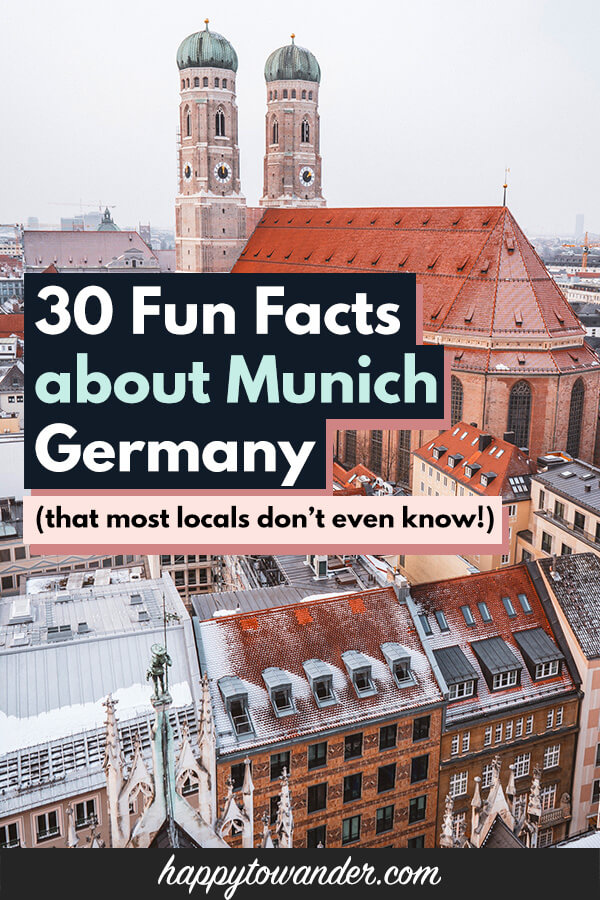
Fun Facts about Munich Landmarks
Let’s start with some fun Munich facts about the city’s most famous icons, featuring secrets that even most locals don’t know:
Germany’s first ever photo was taken at the Frauenkirche
Back in 1839, Munich scientists Carl August von Steinheil and Franz von Kobell used a tubular cardboard ‘camera’ and chlorine silver paper to capture what would later be known as the first ‘photographs’ ever taken in Germany.
Among them (and considered by many to be THE first photo ever taken in the country) was a snapshot of the famous onion-domed Frauenkirche, one of Munich’s most famous symbols.
In fact, this article by TZ goes as far to claim that photography in Munich even precedes the work of Louis Jacques Mandé Daguerre (who is commonly recognized as photography’s inventor).
While we can’t confirm or deny these claims, one fact remains true: the Frauenkirche has been considered a photo hotspot long, long, looooong before Instagram ever came onto the scene!
Von Steinheil und Kobell – Image
Zeno.org, ID-Nummer 20001903675, Gemeinfrei, Link
Lady Bavaria is not as she seems
It’s a little-known secret that the oh so imposing Lady Bavaria statue (perched elegantly over the grounds of Oktoberfest) is actually…. climbable.
That’s right – a secret entrance around the back allows you to take some stairs up this hollow lady to see the unique view from her head.
Of course, this is a paid attraction, but nonetheless one well worth the cost for a once-in-a-lifetime view.
BONUS FUN FACTS: Our fair lady was once the largest statue of her kind in the entire world… until she was upstaged by a larger bronze beauty…… the Statue of Liberty herself! Some folks have even taken up the (admittedly bizarre) task of estimating what Lady B’s cup size would be… the overall consensus is that she would be a Quadruple Z.
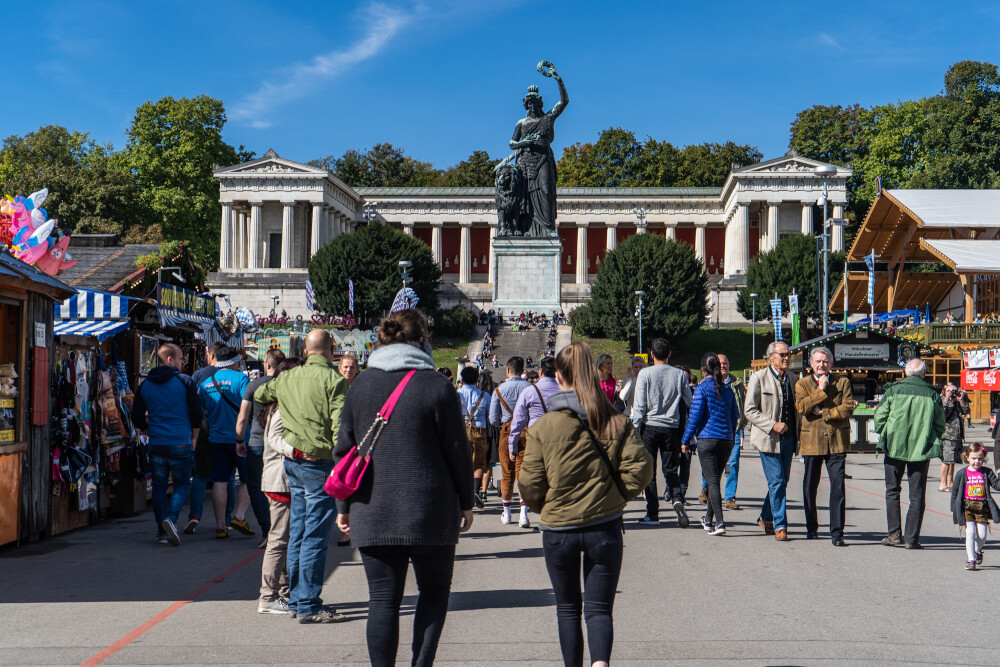
Munich has a piece of the Berlin Wall!
Inconspicuously perched on a leafy trail just outside of Munich’s American Consulate, you’ll find a relic from Germany’s divided past: a jagged piece of the famous Berlin Wall, which has stood there since 1996.
Surrounded by three slanted plates, the official reason for its placement was the 35th anniversary of the wall’s construction, but it’s a little known fact that this piece of history had actually arrived in Munich 6 years prior.
According to this news clipping here, this particular piece of the Berlin Wall was purchased by MP Johannes Singhammer, who allegedly transported the souvenir of what he dubbed “a memorable day” from Munich to Berlin via flatbed truck.
Years later, Singhammer donated the piece to the State of Bavaria, and sculptor Joachim Hoppe was recruited to ‘artify’ it and turn it into a proper memorial.
Today, most visitors fail to spot it, so make sure to keep an eye out!
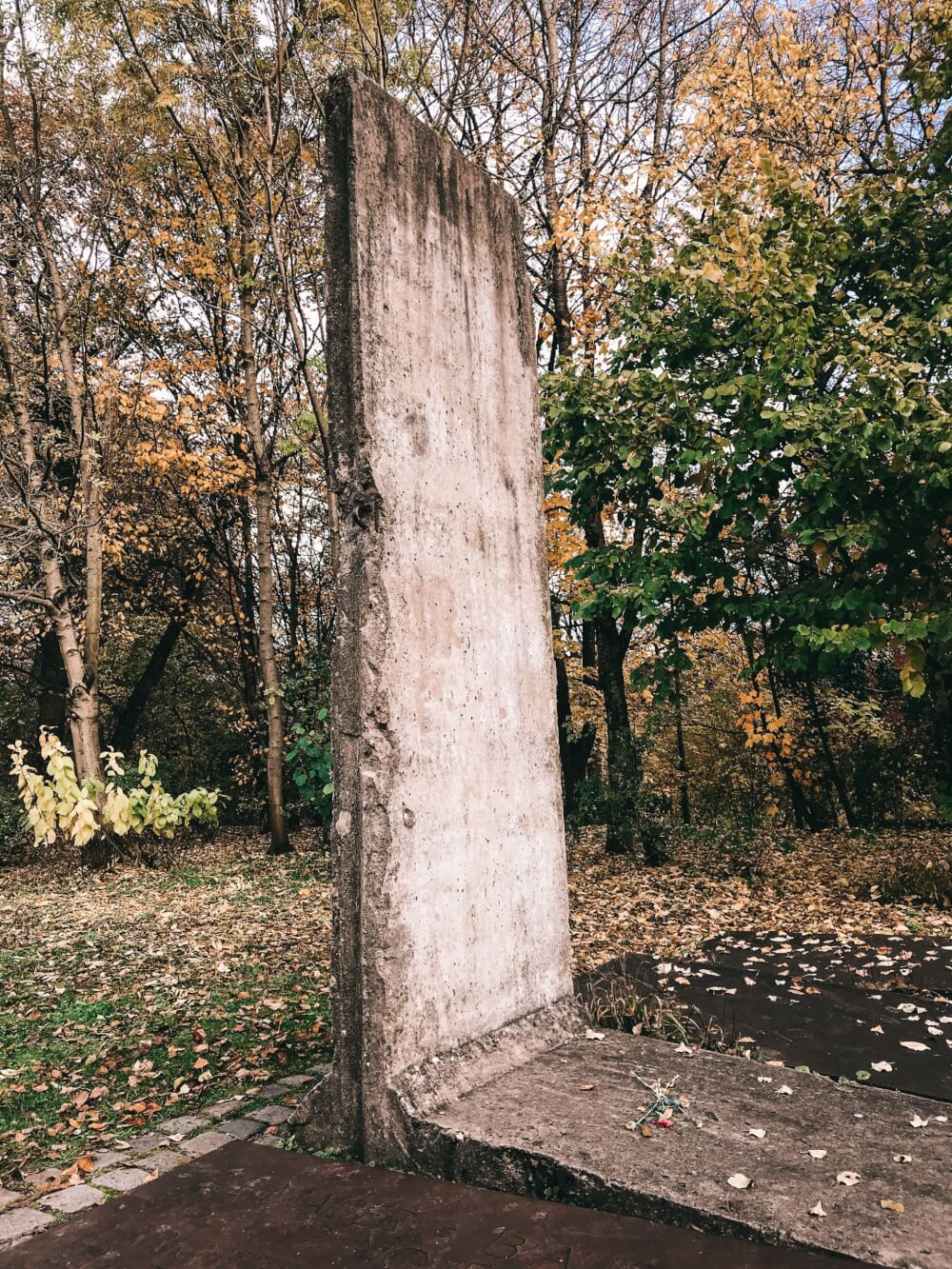
The Nepalese Pagoda in Munich’s Westpark was once used to smuggle drugs
It’s a curious fact confirmed by the official Muenchen.de website here, but apparently when Westpark’s Nepalese Pagoda was being transported to the city, 400kg of hashish were found hidden in its wooden beams.
Details are scarce about how this happened or what occurred after, but it’s still a funny story to keep in mind if you ever come across this beautiful tranquil piece of the park.

The guest list of Munich’s swankiest hotel is a who’s who of royalty & superstars
When the Hotel Vier Jahreszeiten Kempinski opened its doors in Munich back in 1858, few could have predicted the eclectic star-studded guest list that would eventually check in.
According to this official hotel press release, throughout its 150+ years of operation, the hotel has welcomed beloved royals (Empress Sisi, Queen Elizabeth II), prominent superstars (Jennifer Lopez, Robbie Williams), and supposedly once, even the Queen of Thailand, who arrived with over 1300 suitcases (source).
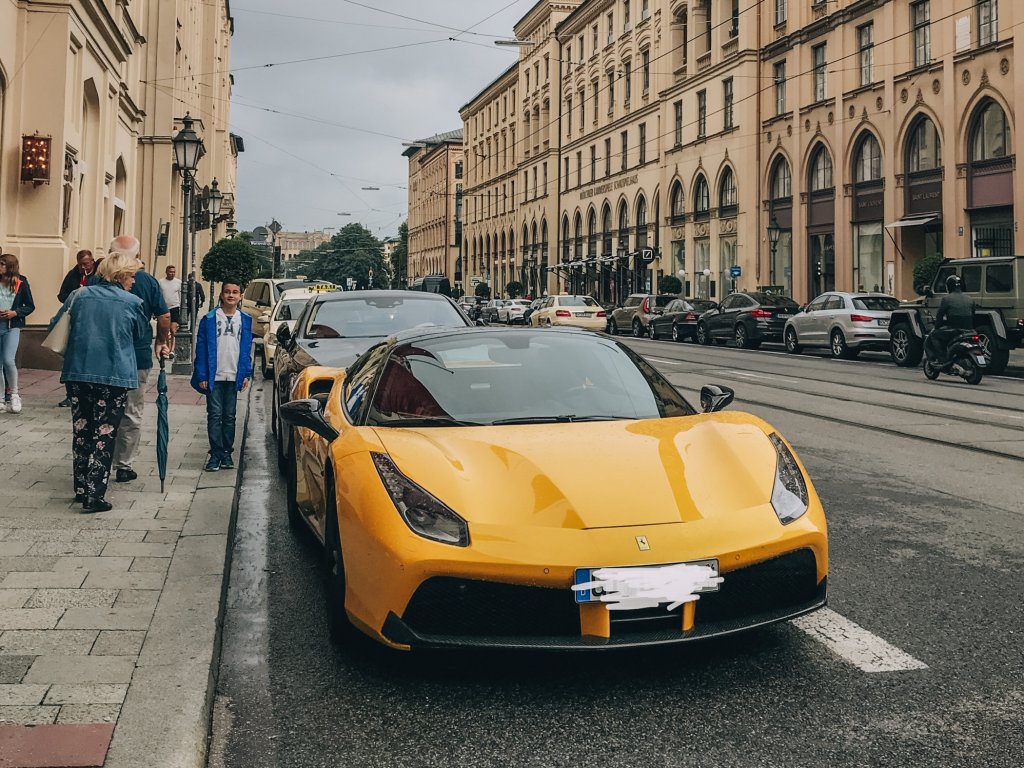
No buildings in the city centre can be over 100m tall
When in 2004, the citizens of Munich were called upon to vote on the future of the city’s skyline, only 21.9% of eligible voters turned up, with a narrow majority of 50.8% voting to limit the height of new buildings to 100m.
The rule has been in place ever since, with a goal of preserving Munich’s historic skyline, which explains the relative flatness of Munich’s city core compared to other big cities.
According to recent articles like this one, amendments to this rule are in the works, but there’s no definitive word yet on whether Munich will become Manhattan anytime soon.
Nonetheless, given the Frauenkirche’s convenient height of about 99m, a local rumour goes that no building in Munich can be built “higher than God”. While this may perhaps not be the official reason, it remains true today that no building in the city center exceeds the Frauenkirche in height.

The Theaterinerkirche was once almost painted grey
When restoration work began on one of Munich’s most iconic facades back in 2009, a fierce debate arose. Would the Theatinerkirche be repainted the bright ochre it was known for, or would a muted grey take its place?
According to this news clipping, the argument emerged in light of new evidence that suggested the famous yellowy church was once grey.
After some back and forth (apparently one religious official chimed that grey would look ‘elegant’), the end decision was made to keep the distinctive ochre hue.
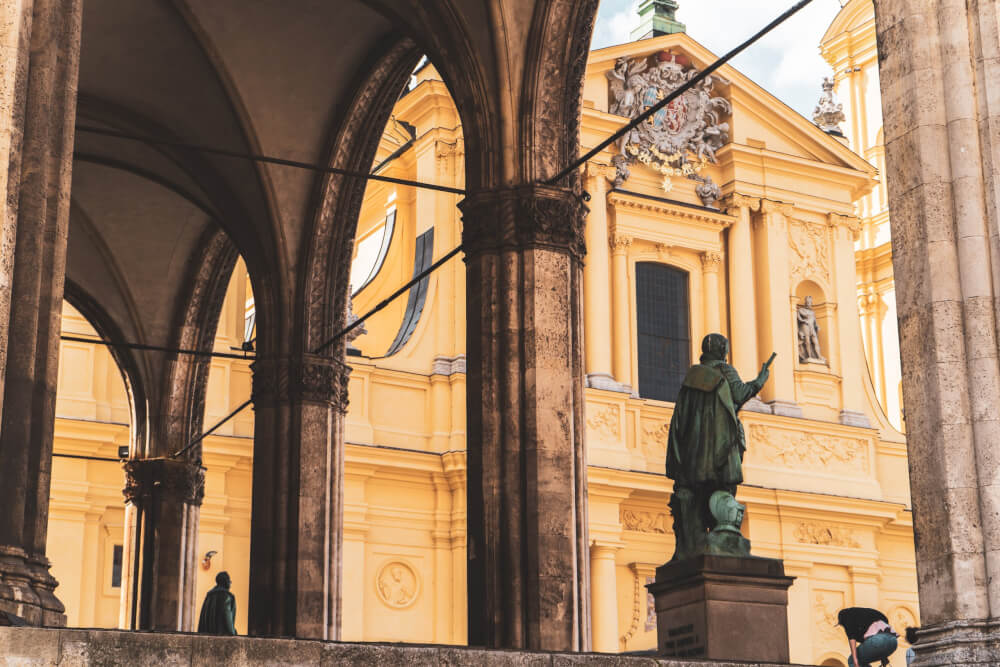
The stretch from Odeonsplatz to the Siegestor is filled with Italian copycats
Many muse that Munich may be the most Italian city north of the Alps, and that’s a pretty apt description when you look closer into the details.
In fact, besides supposedly being home to more Italian restaurants than Sienna and Florence combined (source), one look at one of Munich’s main streets will provide the conclusive evidence, for example…
- The aforementioned Theatinerkirche took inspiration from the facade of Sant’Andrea della Valle in Rome (in my opinion, it’s the exact same – they just added towers!)
- The iconic Feldherrnhalle in Odeonsplatz is modelled almost exactly after Florence’s Loggia dei Lanzi.
- The twin fountains in front of Ludwig-Maximilans-Universität are modelled after the monumental fountains of Vatican City
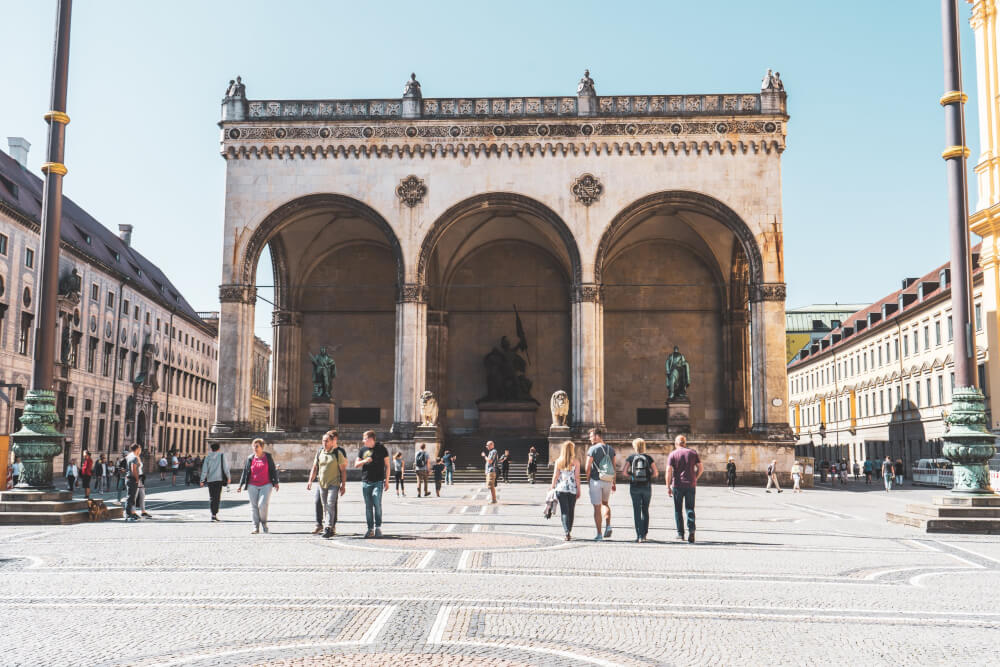
The giant hill in Olympiapark is made of rubble left over from WWII
Hundreds of visitors climb up the Olympic Park’s glorious “Olympiaberg” daily, soaking in the 360 degree views that extend even to the Alps on a clear day.
Few know the true history of the hill though, whose origin story is linked to one of the darkest chapters of Munich’s history.
According to the official Olympiapark website, between 1948 to 1957, Munich’s beloved Olyberg was actually created out of rubble left behind from WWII.
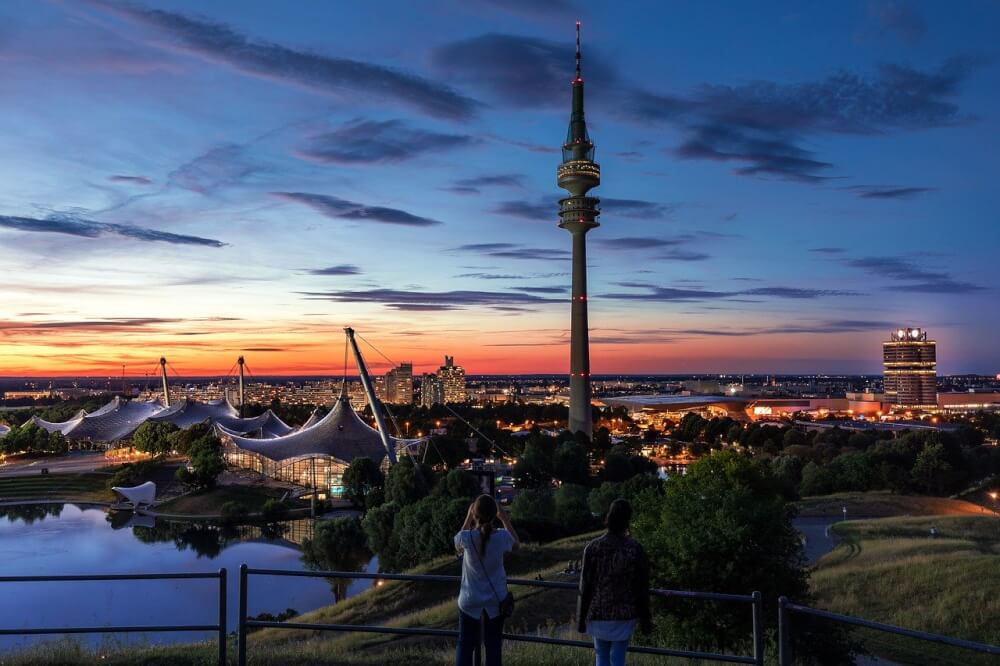
The Chinese Tower hosts a sunrise ball every July
Picture yourself for a second in 19th century Munich, when fancy dances and sumptuous balls were all the rage.
While society’s well-to-do got ample chances in this time to shimmy through the night, their devoted staff (e.g. maids, cooks, nannies, etc.) were afforded no such luxuries.
The solution? Staff were allocated set times to dance on Sundays in the summer, during only the early morning hours before church services began.
These “Kocherlball”s as they would soon be called continued for years, until they were banned in 1904 due to supposed lack of morality (source).
Decades later, the tradition was resurrected for the 200th anniversary of the English Garden in 1989, and it has been an annual tradition ever since at the Chinese Tower, hosting up to 10,000 guests a year every third Sunday of July from 6am to 10am.
While ordinarily, this spot is one of the busiest and most popular beer gardens in the city, few know of this sunrise tradition that brightens up the Munich social calendar every year.
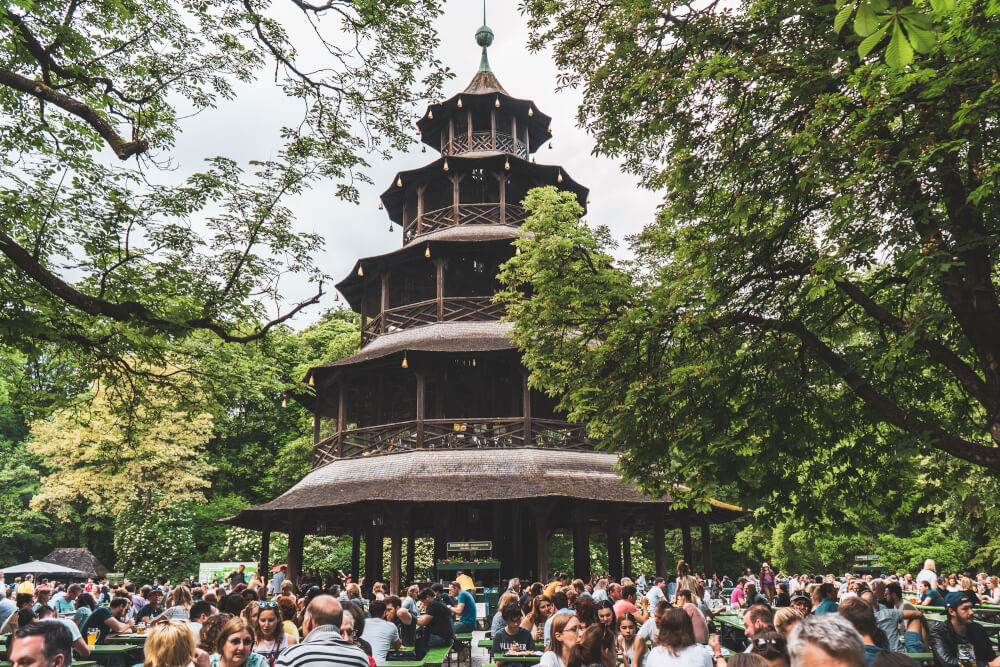
Interesting Facts About Munich History
It goes without saying, but Munich has had one truly fascinating and tumultuous history. Here are some interesting historical facts and stories to keep in mind during your visit:
Hofbräu beer once saved the city from being destroyed
When Sweden marched into Munich and occupied the city during the Thirty Years’ War, it was in fact one of München’s most delicious exports that swooped in to save the day – Hofbräu beer, a drink so beloved that it was used (according to the official Hofbräu website here) as a bargaining chip to avoid the city’s destruction.
Indeed, 344 buckets of Hofbräu Maibock were said to have been exchanged as part of Sweden’s promise to not pillage or plunder the city… a promise that the Swedes dutifully kept.
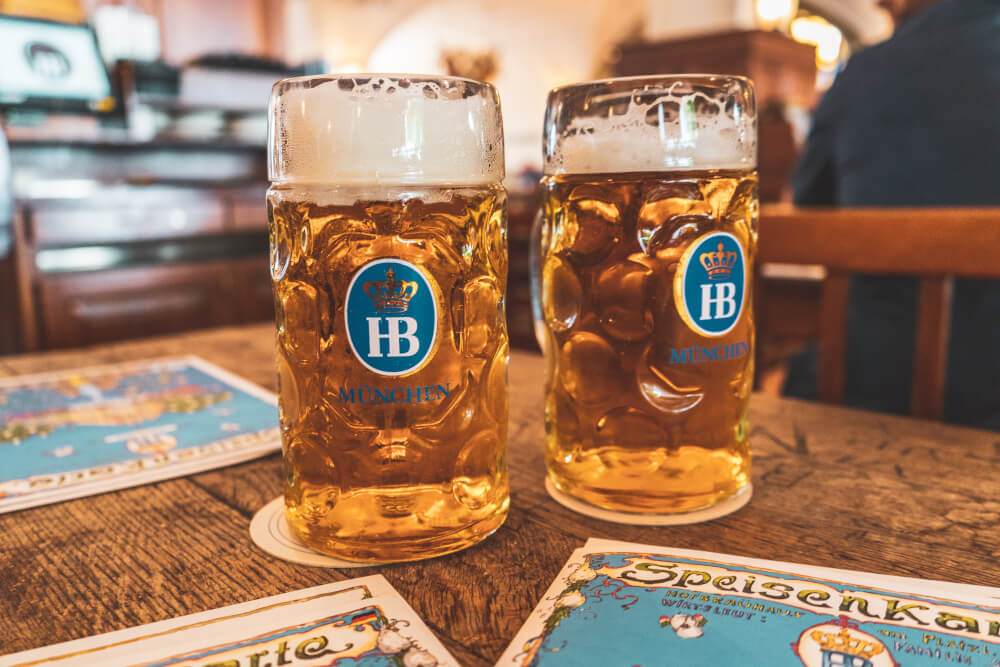
… and Hofbräu (almost) came to the rescue again during a devastating opera house fire
There’s a popular legend in Munich that once upon a time, when a fierce fire broke out at the opera house and the (then innovative) sprinkler system failed, citizens tried to rescue the iconic building by hosing the fire down with Hofbräu beer.
And while this is a wonderful story that I so wish was true, according to this BR article here, the true story is that after they ran out of water to put out the fire, citizens resorted to rolling over barrels full of brewery water from the nearby Hofbräuhaus.
This didn’t do the job though, and the opera house nonetheless burnt down, with reconstruction later funded largely in part by a beer tax known as Bierpfennig.
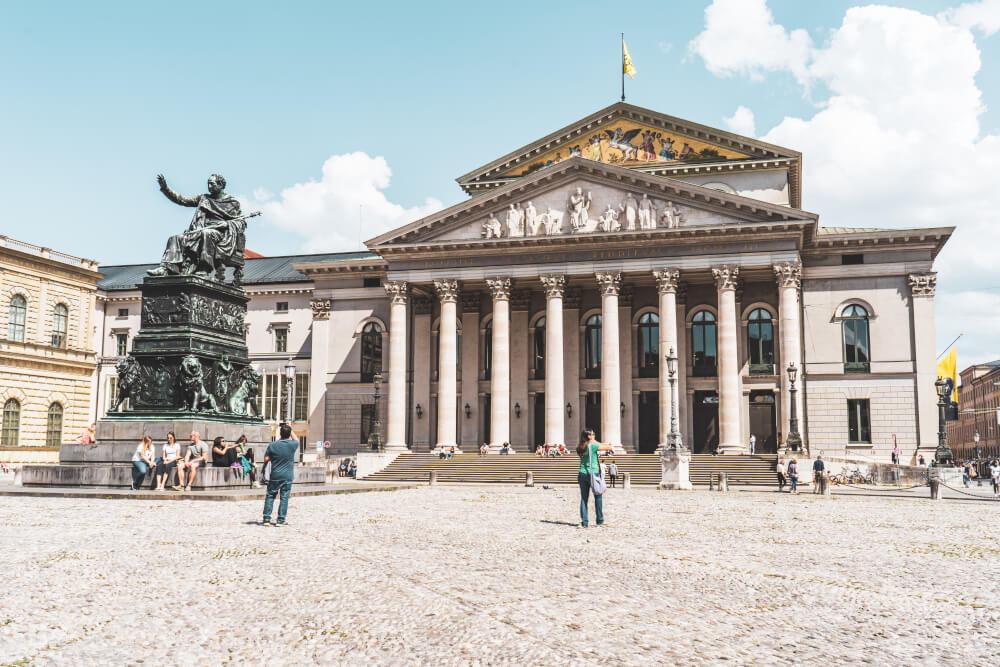
There’s a troupe of dancers that have been dancing every 7 years since the Plague
While the origins of this legend are murky (much like any piece of European history extending this far back), I like it enough to still mention it.
According to the official Bavaria Tourism website, it is said that centuries ago, back in the 1500s to be precise, a deadly plague ravaged the city in such a way that people were scared to leave their homes or return to normal life (sound familiar?).
Enter the Schäfflers who, according to legend, took to the streets to perform a dance to boost morale.
Regardless of whether this is the actual origin story of the Schäfflers or not, the Schäfflertanz is an amazing little tradition that continues today – a special dance performed every seven years by a dedicated troupe of 25 dancers sporting distinctive red coats and green hats.
This doesn’t mean they do the dance just once though – they genuinely go on tour and perform up to 20 times a day for several weeks!
It’s one of the most beloved traditions of the area, all the more so because of its rarity. The next time the Schäfflers will make a scheduled appearance is in 2026… although they do appear sporadically at cultural events and parades.
One cool thing about Schäfflers though? Spot them once and you will see them represented all throughout the city time and time again.
For instance, there’s a Schäfflerstrasse in Munich’s Old Town marked off by two faded Schäffler statues, and you’ll even see their bright red coats as part of the famous Glockenspiel performance in Marienplatz.
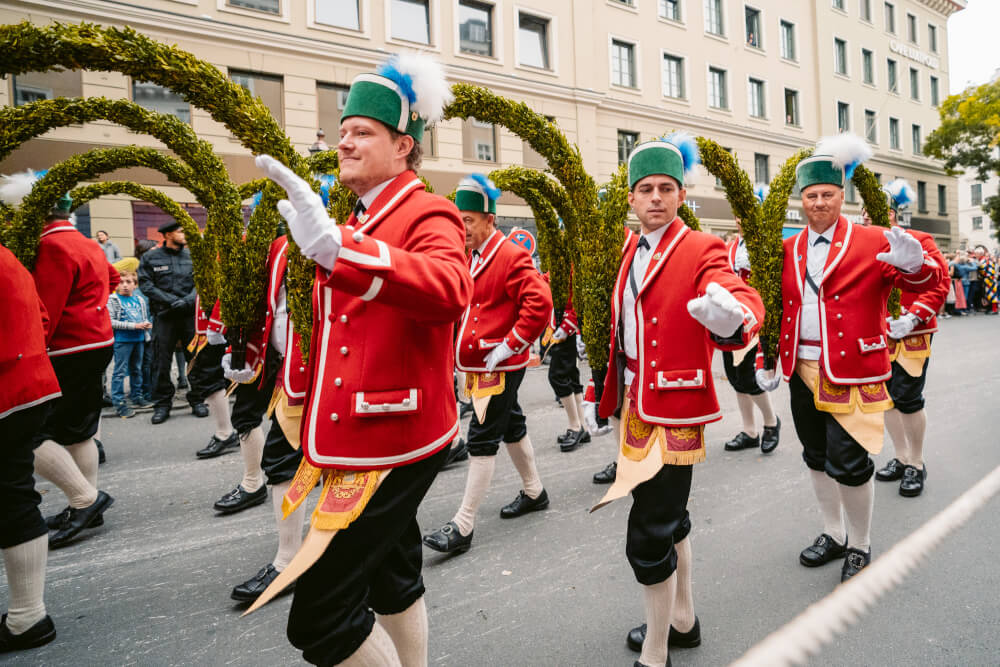
The historic site of the 1972 Olympics ‘Munich Massacre’ is now student housing
The early hours of the morning on September 5, 1972 marked the beginning of one of the darkest chapters of Olympic history – an event that would later go on to be known as the Munich Massacre.
On this fateful night, the Palestinian terrorist group Black September organized an attack against the Israeli Olympic team, killing 2 and taking 9 others hostage, none of which would survive the night.
The incident drew worldwide media attention as the hostage situation and negotiation/rescue attempts were broadcasted to a global audience.
For many who watched live at the time, the image of the then-Athletes’ village is forever a reminder of tragic loss.
Today however, the Olympiadorf has been converted into student housing, and is in fact one of the most vibrant places in Munich, with each concrete bungalow belonging to a student who is free to paint the facade as they please.
The end result is a colourful sea of houses that are ever-changing – an open air art gallery fuelled by community. Take it from me – this is actually where I first lived when I moved to Munich!
BONUS FUN FACT: Student housing here in Munich functions quite differently than in other parts of the world. Whereas in North America, student housing is commonly separated based on your school, here, students attending all different universities are scattered across various residences, which means your neighbour could be studying drastically different topics than you and attending a completely different university. This to me was quite a surprise!
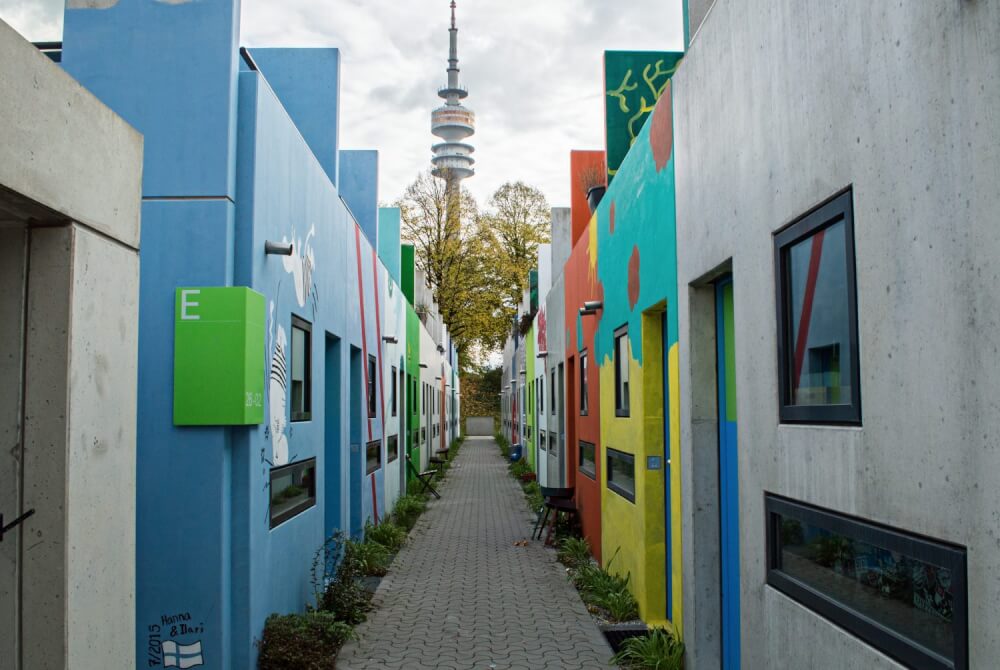
Fun Beer Facts About Munich
Beer is to Munich as air is to life. Genuinely, you can’t escape the beer culture here, which is one of the biggest draws for visitors around the globe. Here are some fascinating Munich facts related to beloved bier:
There are 6 city breweries here known as the Big 6
If choice makes your life fraught with anxiety, I have a solution for you: walk into a traditional Bavarian restaurant and get some beer.
While taverns elsewhere in the world pride themselves on choice, here, your work is simple: choose the type of beer you want (light, dark, wheat) and your job is done.
This is because local spots take their allegiances to breweries rather seriously, and usually only stock one Munich brewery.
How can you tell which spot serves what? Take a stroll down the streets of Old Town Munich and you’ll commonly see signs declaring such allegiances, whether it be “HOFBRÄU”, “SPATENBRÄU”, “LÖWENBRÄU”, “HACKER-PSCHORR”, “PAULANER” or “AUGUSTINER” (the local favourite).
These are Munich’s “Big 6” – the six breweries that brew within the city limits and thus the six that you’ll find represented at Oktoberfest.
NOTE: Wheat beers usually come from a different brewery, and you’ll often find representation from other big Bavarian breweries too (Tegernsee is a favourite!). Still, you’ll rarely find any of the big six co-existing in one establishment.
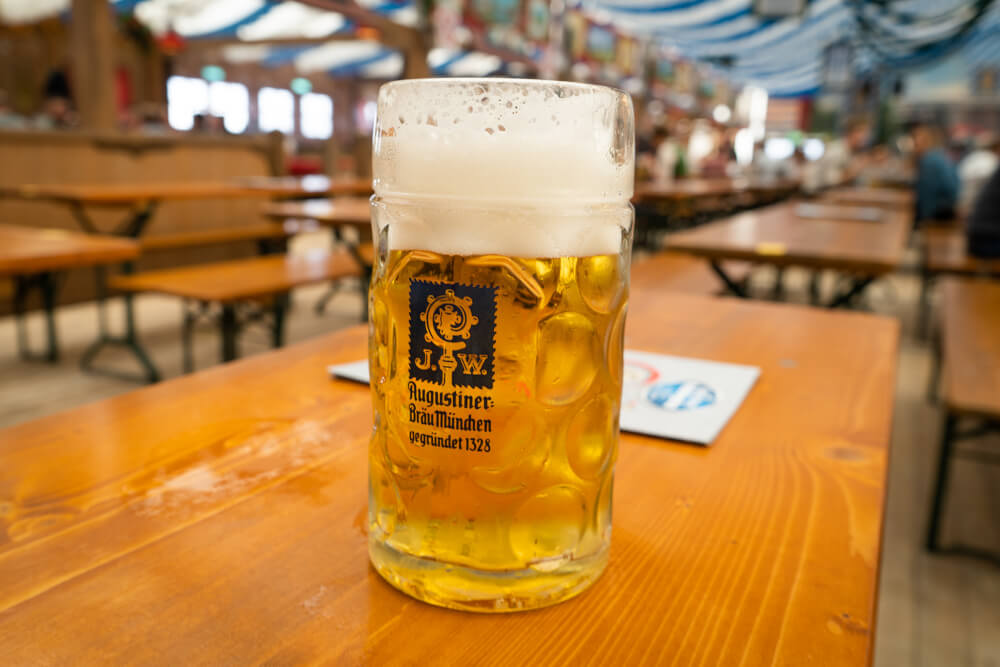
Munich hosts the largest beer festival in the world – Oktoberfest
If you’ve ever been to a wedding that got out of hand, you’ll be able to understand the history of Oktoberfest.
You see, it was a beautiful October’s day in 1810 when the Crown Prince Ludwig (AKA King Ludwig I) celebrated his marriage to Princess Therese von Sachsen-Hildburghausen.
A great time was had by all – there were horse races involved and even regular citizens were invited to revel in the party atmosphere! This royal wedding of the century marked the first ever Oktoberfest.
Fast forward a year later, they decided to do the horse races again.
A few years after that they added an agricultural show… and then a few years later some amusement park rides…. followed by some beer tents.
And as you can imagine, things continued to grow out of hand until Oktoberfest became the largest beer festival in the entire world (today celebrated actually mostly at the end of September, for weather-related reasons).
To learn more about this epic event, read my full Oktoberfest guide.
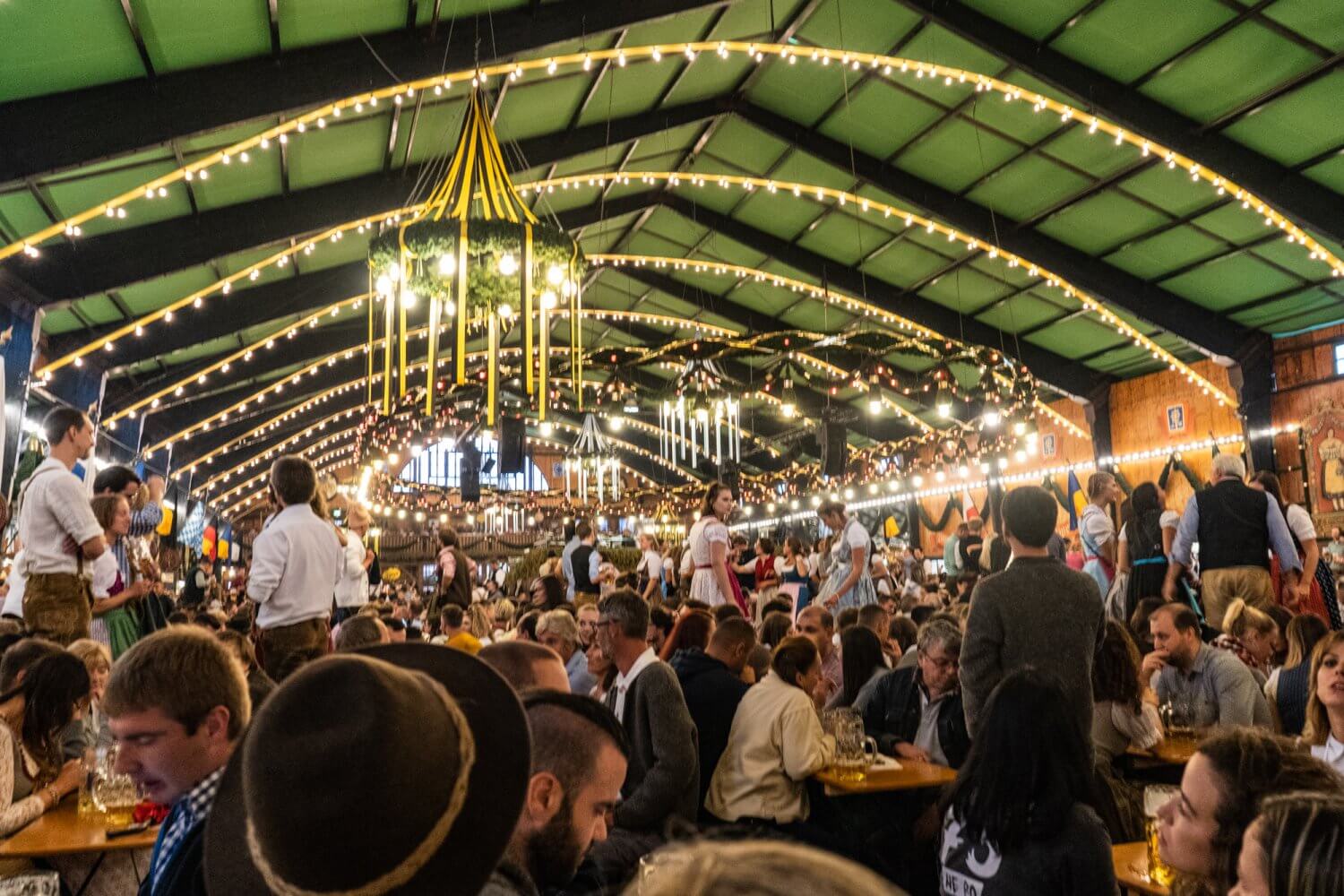
A 500 year old purity law dictates the ingredients of local beer
Let’s hop into a time machine for a second and imagine a bygone era when humans loved alcohol but didn’t quite get how to actually make it properly.
When news began to emerge of terrible tasting beer and even blindness via bathtub brews, some intervention was needed to ensure that bier could delight the population as much as wein did.
Enter the introduction of purity laws to regulate and provide much-need quality control.
While many purity laws have existed over the years, the one still referenced in Bavaria today is over 500 years old, and was written in 1516 to limit the ingredients of beer to ONLY water, barley and hops (yeast was added later as an allowable ingredient once they understood more about how brewing worked).
This centuries-old law is (for many) the #1 reason why beer from Bavaria tastes so pure and perfect. Of course, you would have to taste it for yourself to see!
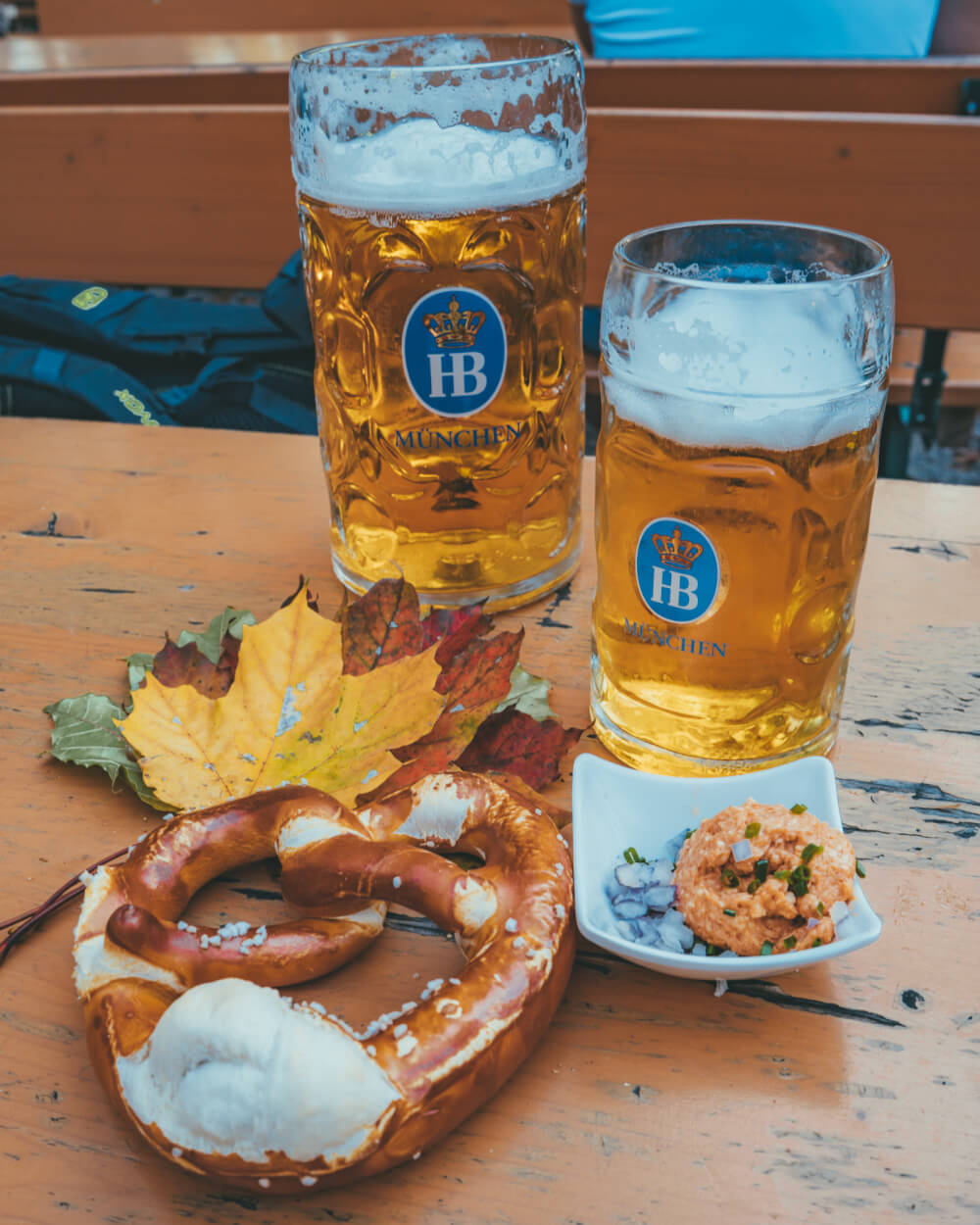
Bavarians do indeed drink beer for breakfast
On that note, so beloved is beer that it is indeed socially acceptable to consume for all meals of the day… including breakfast.
A traditional Bavarian breakfast is composed of white sausage (weißwurst), sweet mustard, a pretzel, and a cool wheat beer to wash it all down.
Oh yes, yes, yes.

Munich is home to the world’s first airport brewery
The year was 1999, and while doomsday preppers madly filled their basements with toilet paper and canned goods in advance of Y2K, the folks over at Munich Airport were working on a slightly cheerier project: the worlds first airport brewery, where yes indeed, the beer is prepared in accordance with the Purity Law of 1516.
Over 20 years later, the Airbräu continues to brew its delicious and affordable beer from their base at Munich airport, where passengers (even on a layover) can taste that pure Bavarian deliciousness and sample some of the region’s tastiest cuisine too.

Cool Facts About Famous People Who Lived in Munich
Munich has been home to several big names over the years… here are some fun and interesting facts about Munich related to its most famous residents:
Einstein once worked at Oktoberfest
When electricity made its first appearance at Oktoberfest’s Schottenhammel tent in 1896, the patrons hastily sipping brews under the glowy new bulbs were probably too dazzled to notice the 17 year old boy installing the lights.
Little did they know, their illumination was thanks to one of the most brilliant scientific minds the world has ever known – Albert Einstein himself.
According to Muenchen.tv, Einstein was just a young hooligan working for the family biz Elektrotechnische Fabrik J. Einstein & Cie at the time, installing lightbulbs in a beer tent.
But hey, everybody has to start somewhere right?

Queen frontman Freddie Mercury once lived in Munich
Anecdotes from Freddie Mercury’s legendary 39th birthday party in 1985 include all of the following: a mandatory drag dress code, a black and white theme, and a star-studded guest list hand-picked by Mercury himself.
What’s lesser known about this blowout bash? It took place in Munich, in a bar then known as “Old Mrs Henderson” (today, the Paradiso Tanzbar).
Freddie’s ties to Munich run far deeper than just a one night stand however.
He actually lived in the city for years! In fact, the Queen music video for It’s a Kind of Magic was filmed in the city’s (now defunct) Musicland Studios, along with Freddie’s solo album Mr. Bad Guy, and the music video for Living on my Own (ft. clips from the aforementioned birthday party).
There’s even a split-second establishing shot of Munich’s skyline in the biopic ‘Bohemian Rhapsody’. Click here to read more fun facts about Freddie’s time in Munich.
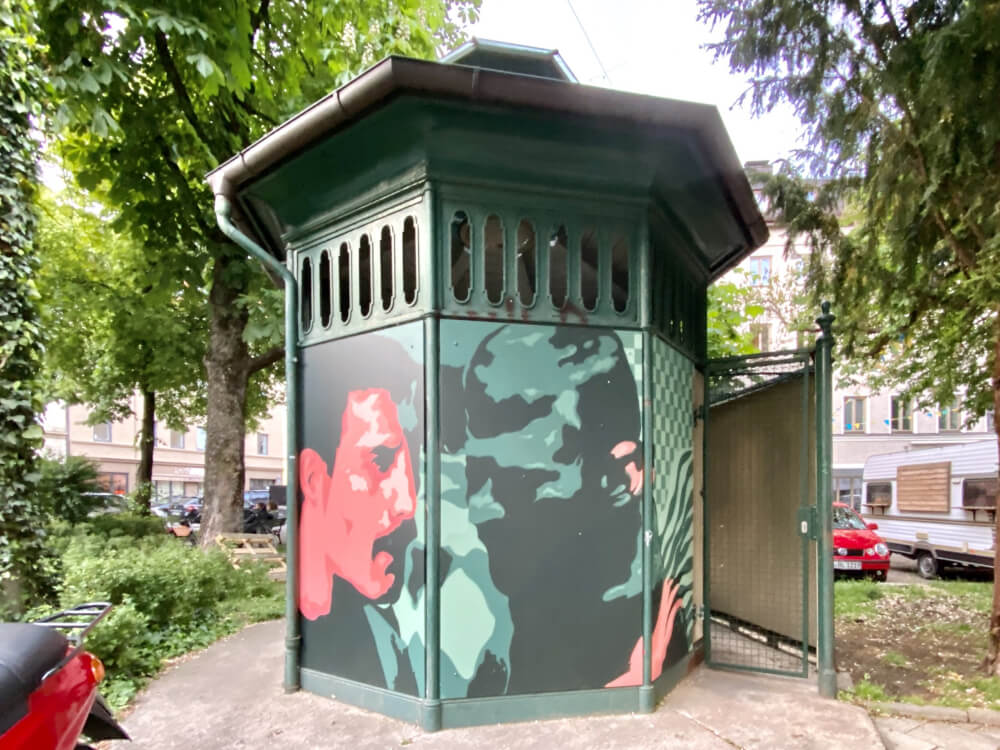
Mark Twain worked on some of his most important pieces here
It was a dreary winter night in 1878 when famous author Mark Twain set foot in Munich for the first time.
According to letters, he had initially described the city as the “horriblest place, the most desolate place, the most unendurable place!”
Luckily, the charms of Munich wormed their way into Twain’s heart, and he stayed for several months.
It is said that he overcame writer’s block here and found inspiration to complete some of his most legendary works, including the Adventures of Huckleberry Finn.
BONUS FUN FACTS: The apartment he lived in is still standing today at Nymphenburgerstrasse 45, and there is a street named after him in Munich’s Pasing-Obermenzing called Mark-Twain-Strasse.
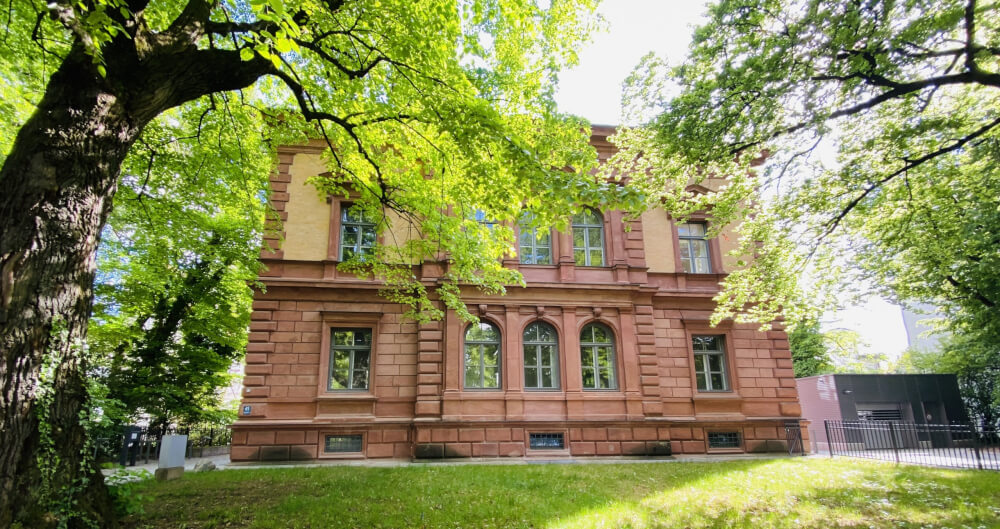
The King of Thailand loves Bavaria, and has a swanky lakeside property just outside of Munich
It was the summer of 2016 that Munich made headlines worldwide for its involvement in a bizarre scandal – a scandal peppered with royal intrigue, big tech, lawsuits and… crop tops?
This all sounds made up, but in July 2016, the King of Thailand Maha Vajiralongkorn, also known as King Rama X, attempted to sue Facebook for a video circulating of him wandering around a shopping center in a crop top. This shopping center was in Munich!
Of course, this isn’t King Rama X’s only connection to Munich – he’s actually a fairly well-known figure around here.
Besides his penchant for crop tops, sports bras, and flying 10,000 miles roundtrip just to attend parties, he also owns a 10 million euro villa in Tutzing, found along the scenic shores of Lake Starnberg.

Interesting Things You Never Realized Were Invented in Munich
Munich has long enjoyed a reputation for being a hub of innovation and tech… but here are some interesting things that you probably didn’t know originated from this very city.
Jimi Hendrix’s signature guitar smash originated in Munich
The club may no longer exist, but back in the 1960s, a Munich establishment on Leopoldstrasse known as the Big Apple Club was THE place to be for live music in the city.
According to this official fan site, on one particularly lively night, music history was made when a (relatively unknown) Jimi Hendrix was pulled off-stage by excited fans during a gig, inadvertently breaking the neck of his guitar.
Never one to waste a good moment, Hendrix then smashed the rest of the guitar up on stage, marking the first-known instance of his iconic guitar smash.
Plasticine was invented here
Eccentric pharmacist Franz Kolb, whose perch was located in Kapuzinerplatz, had a longstanding reputation for experimentation.
Besides dabbling in ointments, pills and the usual pharmaceutical suspects, he also ventured off into more creative experiments.
Inspired one day by the woes of sculptor friends who complained that their clay would freeze over in the winter, he created Plastilin, a soft clay that went on to become a key tool in model making… even today!
Kolb’s legacy is of course preserved in the company Kolb Design Technology.
BMW was born here and its HQ has its own postal code
It’s often one of those “duhh” moments for new visitors, but the world-renowned car company BMW is actually a Munich-based brand that stands for “Bayerische Motoren Werke”, or Bavarian Motor Works.
As such, the company has their worldwide headquarters here, in a distinctive high-rise building by Munich’s Olympiapark.
Built just in time for the 1972 Olympics, the HQ’s swanky silhouette is modelled after the four cylinders of a car engine… and is so extensive that it boasts its own postal code – 80788.

Other Random Interesting Facts About Munich
Last but not least, we have some final unique facts about Munich that I can’t help but share, accrued over years of being a total nerd about this city. Enjoy!
Escalators move faster during Oktoberfest
With millions of people moving through the Oktoberfest grounds every year, it’s unsurprising that some creative methods of crowd control would be needed.
One genius solution? The subtle speeding up of escalators at the main station by the festival grounds.
As confirmed by Muenchen.TV article, escalators during Oktoberfest time at the Theresienwiese stop run at 0.68 meters per second as opposed to the usual 0.5.
One of Munich’s main universities has slides for students to get to class
On December 10, 2002, Munich’s Technical University fulfilled millions of childhood wishes when they unveiled the latest installation for their Math & Computer Science Building in Garching: two 13m tube slides that helped students get to the ground floor in record time.
Even more wonderful? The official TUM website here even shares the formula used by these parabolic slides: z = y = h x² / d².
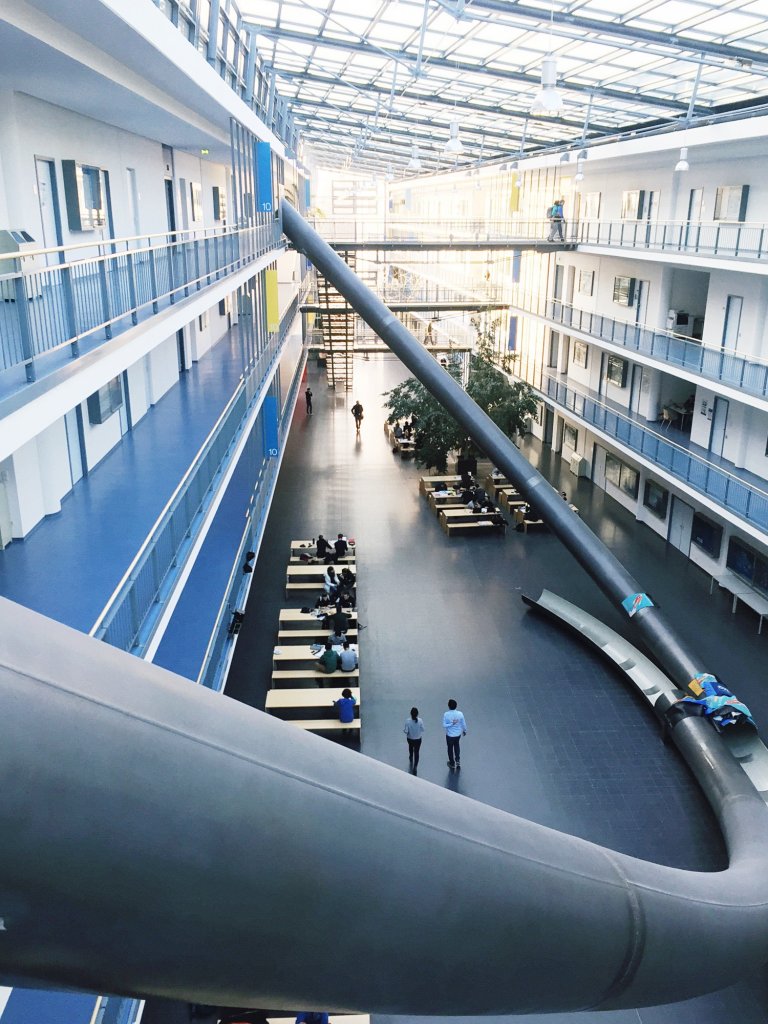
Some of Munich’s U-Bahn Stations play classical hits on a loop
Imagine stumbling into an U-Bahn in the wee hours of the night, 19 minutes to go until the next train.
In other big cities, this scene might be cause for boredom or anxiety, but in Munich, ten underground stations have been holding onto a simple solution for 20 years: blasting classical music.
According to this news clipping here, 12 classical pieces have been running on a continuous loop in 10 of Munich’s underground stations since 2000, an initiative that is meant to make the stations feel safer. Among the classics? Vivaldi’s “Four Seasons” and Mozart’s “Posthorn Serenade”.
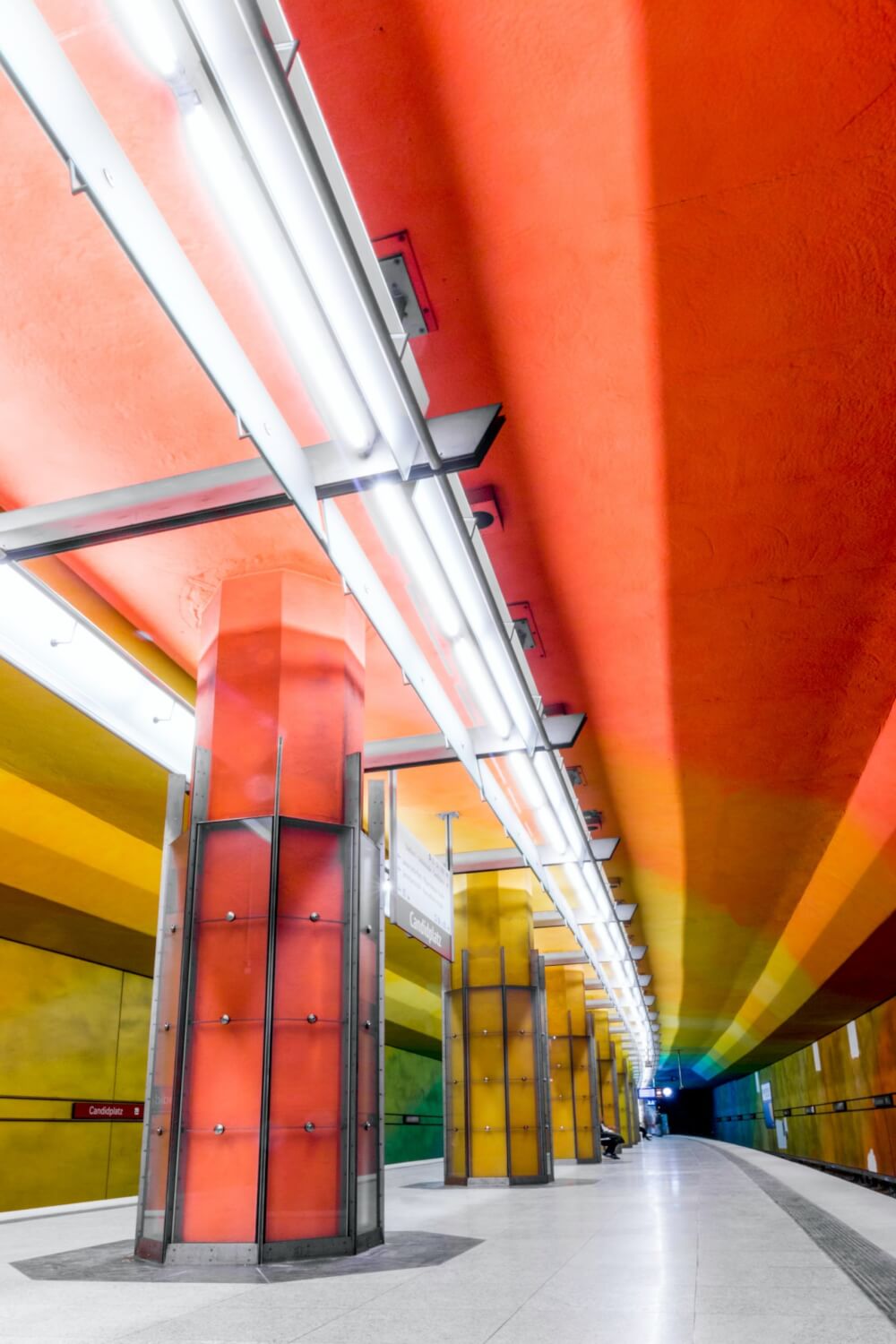
The Italian name for Munich is “Monaco”
When two Italian women ventured from Trento to Munich Central Station in 2008 to pick up their teenage niece, they ran to the police in tears upon finding no trace of their beloved niece.
It was only after some awkward phone calls and clarifications that they had realized what happened: their niece had embarked on a train to the principality of Monaco, not the city of Munich.
How did this 600km mixup happen? Well, Monaco is indeed the Italian name for Munich.
The reason? The origins of the name München are said to come from “among the monks”.
Since München is a tough name to pronounce in Italian, they worked out their own name – Monaco, which in Italian means monk……. and confusingly here we are today.
NOTE: To avoid mishaps like the news item above, Munich is mainly referred to as Monaco di Baviera… although the distinction is not always possible in cases like train announcement screens, where space is limited. I once had to take a train from Rovereto bound for “Monaco” and almost had a heart attack!
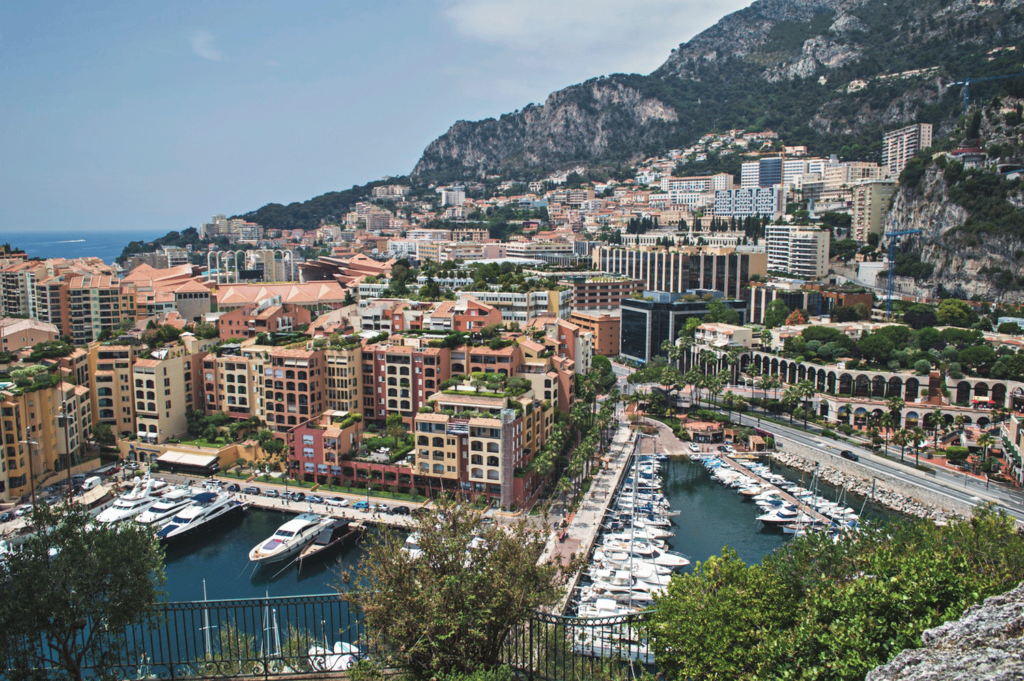
There’s a tram where passengers ride in swimsuits (and even naked, once upon a time)
Hop on a tram between Tivolistraße and the National Museum in the summer and you’ll often encounter a strange surprise – soaking wet teens in their swimsuits, giddy and giggling, often barefoot.
Your eyes don’t mistake you – this is a common sight around the English Garden, where a popular pasttime is to jump into the Eisbach, float down for the epic joy ride of a lifetime, then climb out of the stream and do it all over again. Some hop on the tram to save time.
Legend has it that this tolerance for dripping bathers once even extended to those who chose to swim in the nude… unfortunately (or perhaps fortunately), this is no longer the case.
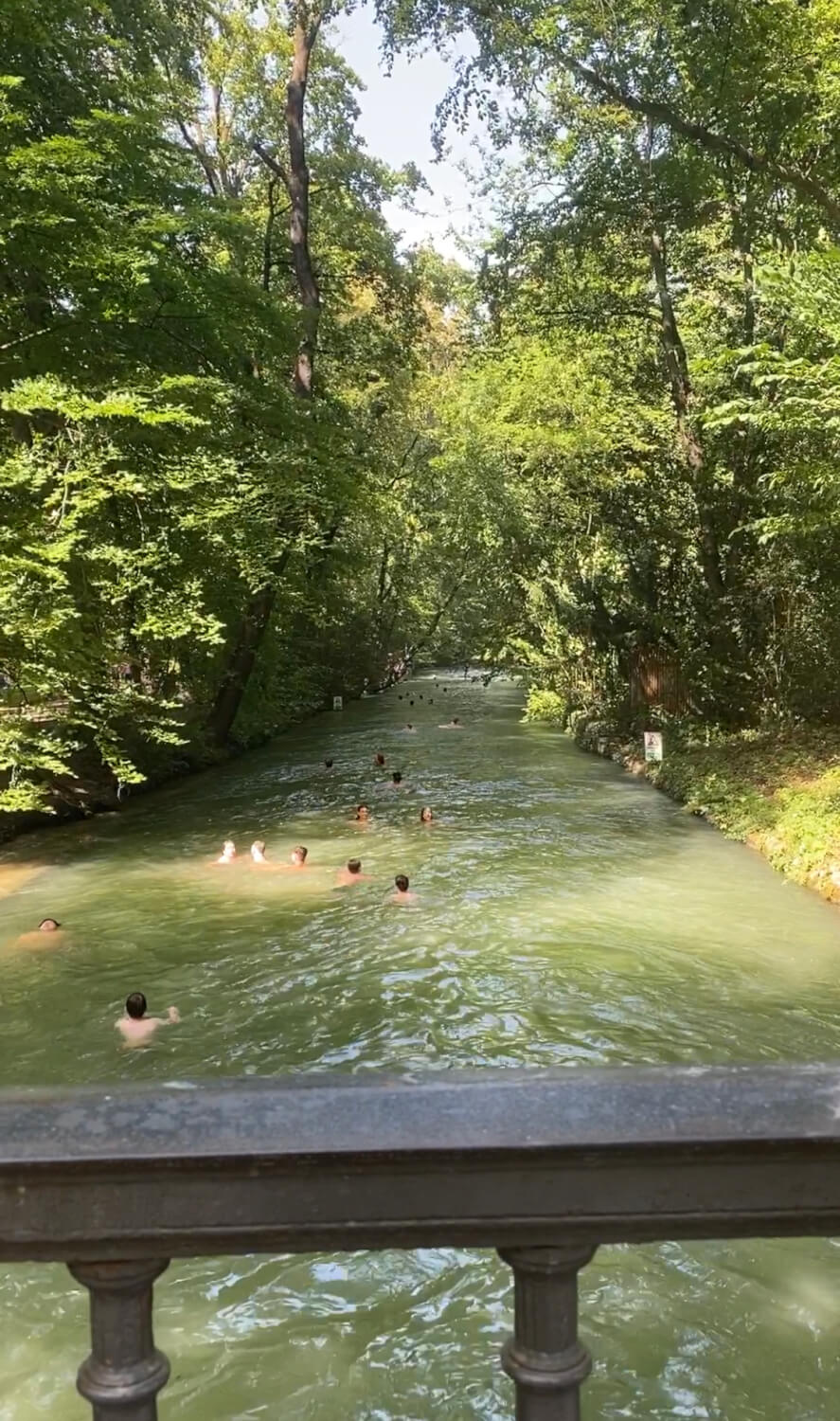
I hope you enjoyed this list of Munich fun facts!
Let me know in the comments if you have any more you think we should add.


Greetings ! I love your content, and do follow your posts as well. You are fantastically capable, dedicated, and moving! .Thank you. Much Respect
Thanks so much for the kind words!